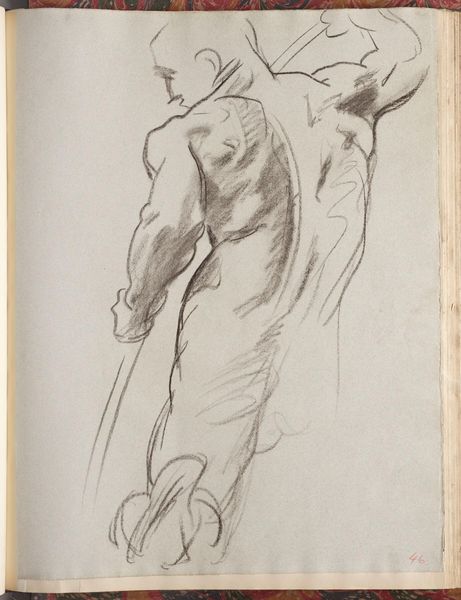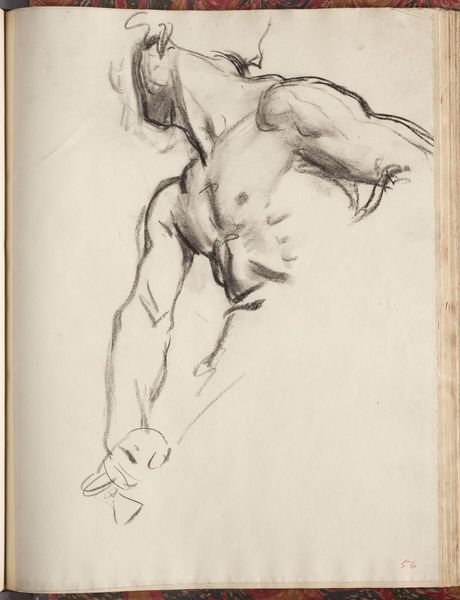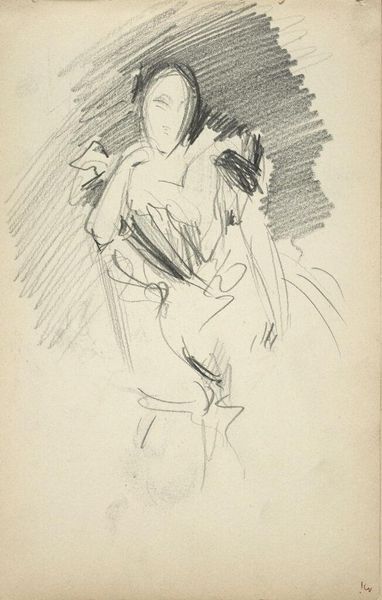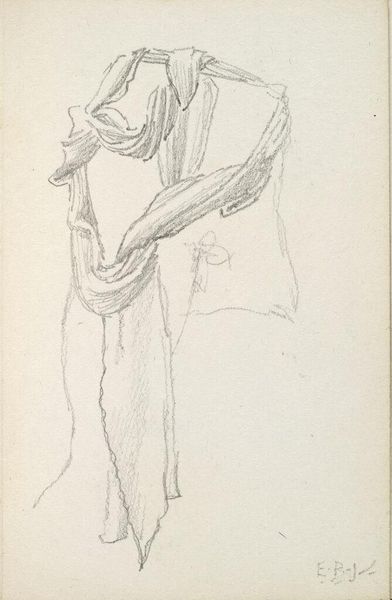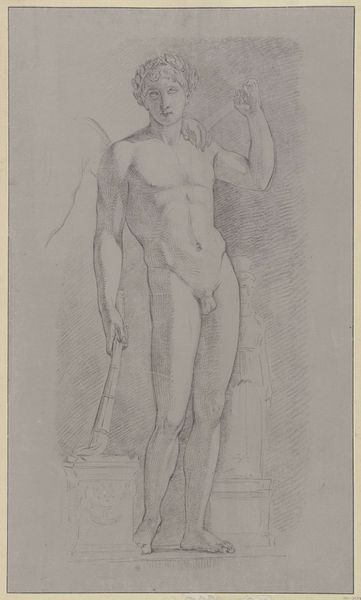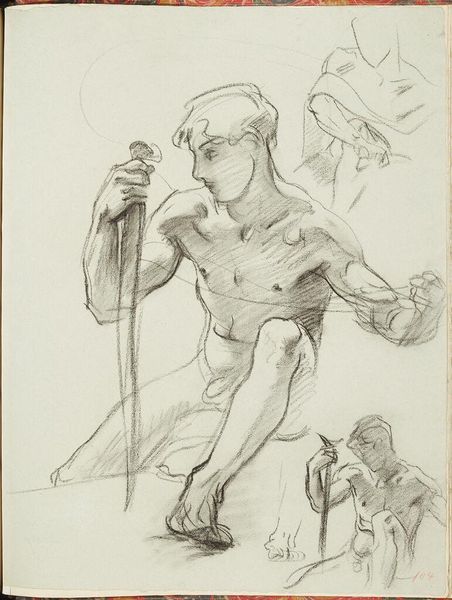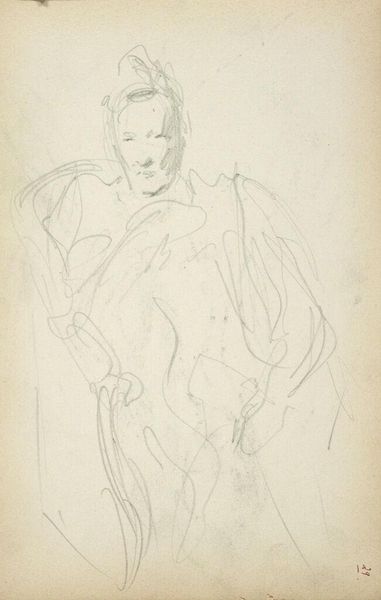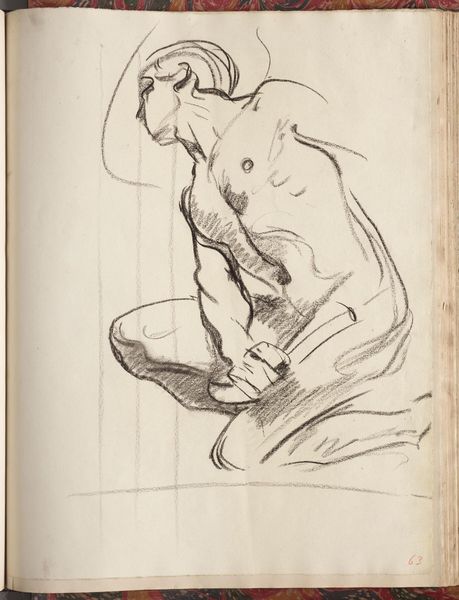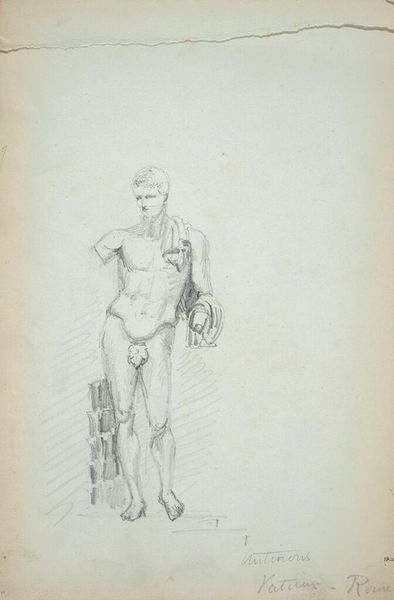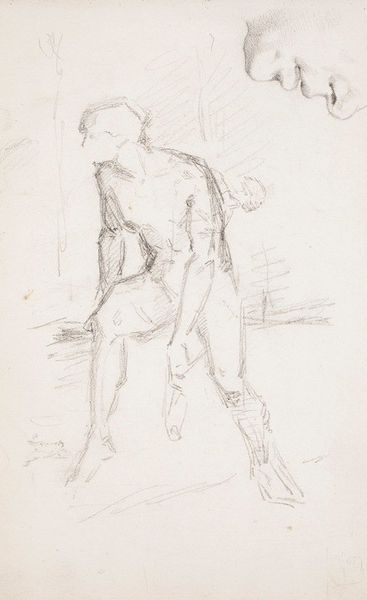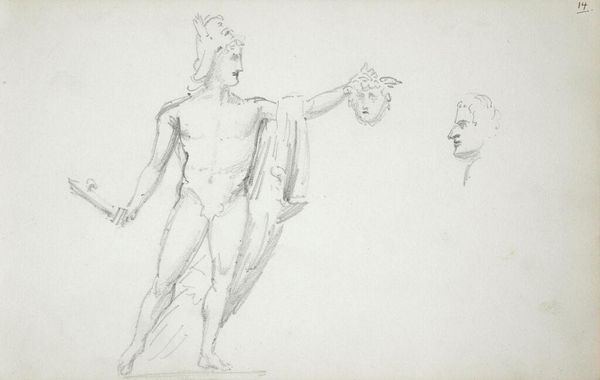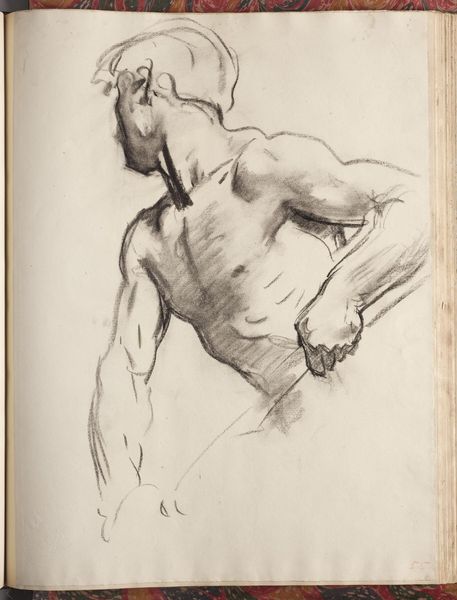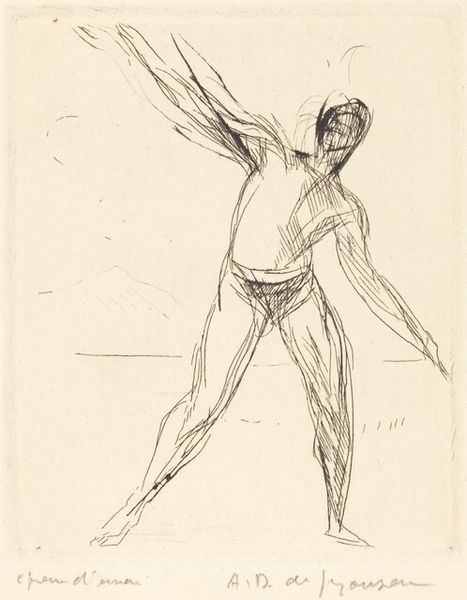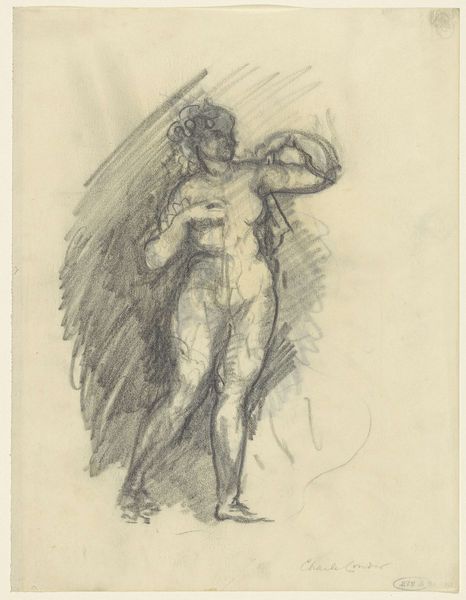
Dimensions: 29.1 x 19.2 cm (11 7/16 x 7 9/16 in.)
Copyright: CC0 1.0
Curator: Here we see John Singer Sargent's pencil drawing, "Perseus, after Canova," now residing in the Harvard Art Museums. My immediate impression is one of stark simplicity, almost brutal in its directness. Editor: I see it too, but I read something different. What strikes me first is the inherent tension in representing such a potent symbol of patriarchal power – Perseus with Medusa's head – through the humble medium of pencil on paper. It diminishes the grandeur, making it accessible, even questioning its authority. Curator: Absolutely. The choice of graphite emphasizes the labor involved in artistic production. Sargent is literally sketching out a monument, reducing the heroic to a study of form and light, almost industrializing the myth. Editor: And yet, there's also a crucial reading to be made about the gendered politics at play. Medusa, a victim of sexual assault transformed into a monster, is reduced here to a trophy. Sargent, consciously or not, reproduces that power dynamic. Curator: A dynamic visualized through very specific material choices. The graphite, easily erased, speaks to the ephemerality of even the most enduring narratives, highlighting process over permanence. Editor: I think that's an important point. Ultimately, looking at this drawing compels us to confront the complex interplay between artistic representation, social structures, and the materials that give them form. Curator: Indeed, a powerful sketch revealing so much about artistic process and its relationship to larger systems.
Comments
No comments
Be the first to comment and join the conversation on the ultimate creative platform.
